
Discover the secrets of the land of extremes on a luxury holiday to Chile.
As a country of striking contrasts and rich heritage, a luxury holiday to Chile offers more than meets the eye.
From the sun-scorched Atacama Desert to the glacier-carved landscapes of Patagonia, this extraordinary country is steeped in unique traditions, ancient cultures and breathtaking natural beauty. Discover the origins of its world-renowned Carménère wine, unravel the mysteries of the Chinchorro mummies, some of the oldest in the world, and gaze into the cosmos from the otherworldly Moon Valley under some of the clearest skies on Earth.
One of our Latin America specialists, Jacob, recently travelled across Chile, and along the way, he gathered a list of the 11 most fascinating facts that will give you a true insight into this captivating country, perfect inspiration for anyone planning their trip to Chile.
EXPLORE CHILE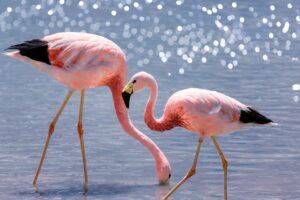
The Chilean Desert is a Wildlife Haven
Despite being one of the driest and seemingly inhospitable places on earth, the Atacama Desert is resplendent with wildlife. Among wind-cracked rock valleys and towering volcanos run vicuñas, guanacos, viscachas and foxes while condors and hawks soar through the azure skies. Drop down to the Atacama’s rocky coast, and you’ll even see Humboldt penguins.
Perhaps the strangest sight are the flocks of pink flamingos that pick through the brackish lakes for the algae that give them their distinctive colour and are more common in the arid desert than a 1970s front lawn.
EXPLORE THE ATACAMA DESERT
Easter Island Isn’t Actually Called Easter Island
It is known as Rapa Nui, which is also how the people of the island and their language are known. We get Easter Island from the Dutch explorer Jacob Roggeveen who renamed it such when he landed there by accident on Easter Sunday in 1722. It was here he encountered the Rapa Nui population who had been calling it Rapa Nui for over 500 years.
As blessed with navigational skills as he was with island-naming creativity, he had been trying to find Davis Island, which didn’t exist.
EXPLORE EASTER ISLAND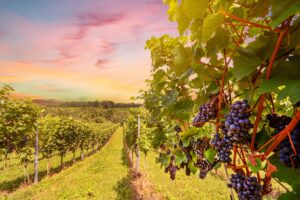
A Fascinating Story Behind Chilean Wine
Chile’s now ubiquitous national wine, Carménère, is not originally Chilean. With its roots in Bordeaux, Carménère was brought to Chile in the mid-1800s and for 150 years, wine producers thought it was Merlot due to the close resemblance of their leaves. Fortunately for Chile and wine lovers everywhere, an eagle-eyed French grape expert named Jean-Michel Boursiquot discovered the true identity of the grapes. They were officially recognised as a distinct variety in 1998.
EXPLORE THE CHILEAN WINELANDS
The World’s Oldest Mummies Were Found Here
Some of the world’s oldest tombs lie in the weather-beaten north of Chile. On the Pacific coast of the Atacama Desert in Arica, a town known mostly for its surf culture, the world’s oldest artificially mummified human remains were found, predating the Egyptian mummies by thousands of years. Little is known about the Chinchorro culture that created the mummies or why they adorned the bodies with clay masks and decorated them with sticks and reeds. However, prominent anthropologist Bernando Arriaza theorises these were the ways the Chinchorro would become “masters of the dead”.

Home to Some of the World’s Most Beautiful Clear Skies
Chile is the astronomical capital of the world due to the Atacama Desert being the perfect location from which to observe the mysteries of the universe unfolding. With over 300 clear nights a year, clean and steady air coming in off the Pacific Ocean, and many high-altitude peaks, the Chilean desert attracts both casual and professional astronomers from around the world.
The Explora Hotel in San Pedro de Atacama has its own observatory with a powerful 40cm optical telescope open to visitors and guests of the lodge. Visitors keen to understand the universe’s building blocks can also explore the nearby ALMA observatory.
The jewels in the crown, though, are two of the largest reflecting telescopes on the planet, named, in a move that Jacob Roggeveen would have been proud of, the Extremely Large Telescope and the Very Large Telescope.

Pisco is the Spirit of Choice
Ask any Chilean what their spirit of choice is; the answer will often be pisco. Originating in Peru (so long as you ask a Peruvian) and exported through the port town of Pisco (hence the name!), the potent South American brandy spread over the continent and eventually the world thanks to the delicious Pisco Sour cocktail gaining popularity in the chicest bars.
A Friday-night favourite in Chile, Pisco is usually mixed with coca-cola (piscola) or lemonade (pisco blanco) and accompanied by a classic completo or rich, meaty chorrillana for the perfect evening.
If pisco isn’t for you, check out the independent distillery in Puerto Natales that produces a delicious crisp spirit from local ingredients, perfectly named “Last Hope Gin”.
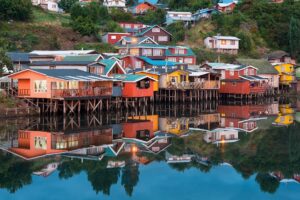
Chilean Folklore Runs Deep
Chile is a mystical shroud of mythology, especially in the thick forests and mountains of the south, where aeons of history are related in indigenous stories and fireside superstitions from the Mapuche and Chilote communities.
Among these tales of winged serpents and mystical lost cities is the Trauco, a foul and ugly dweller of the forests of Chiloé, whose powers of seduction are said to be impossible to resist. When there are unexplained pregnancies in the community, you can be sure the Trauco is near. Visiting the great green swathe of Chile between Concepcion and Coyaique yields a wealth of fascinating stories and cultural connections that still root the people to the land they have walked for millennia.

The Land of the Patagonian Giants
Ferdinand Magellan claimed that as he sailed off the southern coast of Chile, he saw a giant dancing on the shoreline. Similar stories have abounded in the wake of ships strafing the southern tip of South America, and many sailors and explorers returned from their trails bearing stories of enormous indigenous people in the land, upwards of nine-feet tall. So ingrained was the idea, that Patagonia got its name from the Spanish for “bigfoot”, and early maps of the region were marked by cartographers as the “land of the giants”.
Whether these stories are true or result from an over-rationing of grog on board is unknown, but the name has stuck. Today, it more likely refers to the monolithic mountains, enormous icebergs calved off glaciers larger than cities, and the volcanoes scorching the long tail of the Andes.
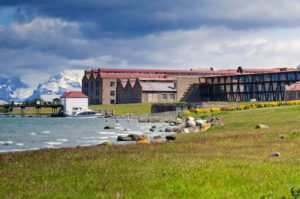
The Singular Patagonia and the History
One of the country’s finest hotels, The Singular Patagonia, just outside the mighty Torres del Paine National Park, houses a Chilean National Monument. Designated for its historical and cultural significance, the Frigorifico Bories is the preserved cold storage facility built over a century ago to facilitate meat packing and industry in the area. Surviving fire and tough conditions at the end of the world, the site was restored and integrated into The Singular Patagonia in 2011. It serves as a living museum within the hotel, giving the property another unique distinction alongside its fantastic location and exquisite cuisine.
EXPLORE SINGULAR PATAGONIA
Carretera Austral, A Newly Beaten Path
The great route through the heart of Chile’s staggeringly beautiful Aysén Region started life as the brainchild of Chile’s brutal dictator Augusto Pinochet, and is still sometimes known as Pinochet Highway. Intended to connect the remote communities of Chile’s vast south, tens of thousands of soldiers from Chile’s army dug the route that took twelve years to open to traffic.
Today, the Carretera Austral is not only a crucial connecting point for Chileans, but an unbelievably beautiful destination for adventurous travellers looking to explore lush green forest, bright blue glaciers, fjords, lakes and rugged coastline. It’s the perfect place for a self-drive tour, with views asking to be stopped at and hikes demanding a thorough exploration.
EXPLORE OUR SOUTHERN CHILE SELF-DRIVE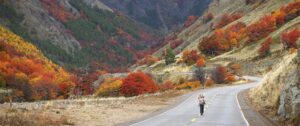
Chilenismos!
Ask most people what language they speak in Chile, and they will say Spanish. Ask most Chileans, and they will say Chilean. Ask any Spanish speakers, and they will say, “I have no idea!”. Many of the national dialects of Spanish in Latin America have diverged from the romance language to form their own beautiful languages. Still, perhaps none have evolved quite so many double meanings, idioms, pronunciations and phrases as Chilean Spanish.
Known affectionately as “chilenismos”, this evolution of language ranges from the quaintly delightful “vale hongo”, meant to mean “worthless” but literally translating to “worth a mushroom” – to the ubiquitous “weon”. A word with so many meanings depending on the context, syllable stress and even the person you are talking to that the phrase “weon weon weon” makes perfect sense under the right circumstances. Meaning mate, idiot and giant egg, this is a key phrase appearing in most colloquial sentences.

Book your tailor-made Chile holidays for 2025, 2026 & 2027
On our tailor-made trips, you can pick and choose what you want to see and do. To start planning your luxury holidays, honeymoons or family getaways, speak to our Asia travel specialists on +44 (0) 2039 933538 or make an online enquiry.
GET IN TOUCH